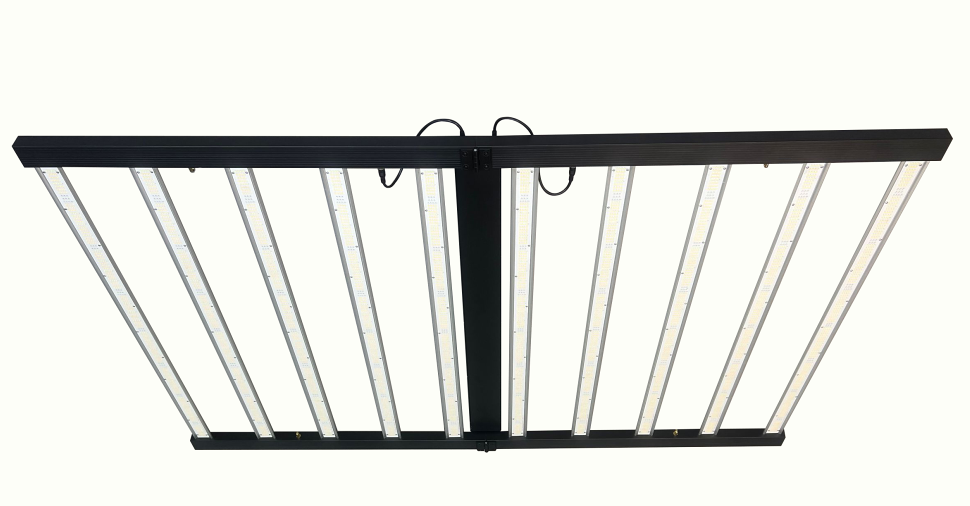The climate is cold in winter. Due to the poor air permeability of the greenhouse and the untimely ventilation, the gas in the greenhouse cannot be convectively exchanged in time, resulting in the generation of harmful gases, which leads to yellowing of plant leaves, dry tips, poor growth, and even plant death. Therefore, greenhouse gas damage should not be taken lightly, and prevention should be strengthened. The following plant growth lamp manufacturers introduce the causes and solutions of gas damage.
1. Common types of gas damage and causes
(a) Ammonia and nitrite gas hazards. These two substances are mostly caused by improper fertilization. For example, when applying ammonium bicarbonate or a large amount of urea, ammonium sulfate and a large amount of uncomposted organic fertilizer during topdressing, coupled with high temperature, drought and poor ventilation, a large amount of ammonia and nitrite gas are often produced in the greenhouse in a short time, causing plant poisoning. It manifests as water-soaked spots on the leaf edge, which seem to be scalded by boiling water, and then gradually turn brown, dry and fall off. Ammonia damage often occurs on the leaves on the outside of the plant. The affected part is water-soaked and the leaf edge is burned. Later, it gradually wilts, turns brown and dies. This type of gas damage is most harmful to Solanaceae vegetables. Nitrite gas damage often occurs on the leaves in the middle of the plant. The affected leaves produce irregular white or brown spots like water stains. In severe cases, the mesophyll turns white and dies. Prevention and control methods: Avoid using ammonium bicarbonate in the greenhouse. Urea and ammonium sulfate should be applied less when used as topdressing, and it is best to dilute them with water to 500 times the liquid before watering; farmyard manure must be fully decomposed before it can be applied.
(ii) Carbon monoxide and sulfur dioxide gas damage. When coal fire or sawdust is used for heating in plastic greenhouses, a large amount of carbon monoxide and sulfur dioxide are produced due to incomplete combustion or unobstructed flue gas and high sulfur content in the fuel. When vegetables are harmed by sulfur dioxide gas, obvious white or yellow spots appear on the veins first. In severe cases, the entire leaf becomes a green mesh skeleton and then slowly withers and dies. All kinds of vegetables are harmed by sulfur dioxide gas. Carbon monoxide poisoning will cause the leaves to wither. When the concentration is too high, the whole plant will dry up and die in a short time.
(III) The hazards of toxic gases emitted by the film. Some plasticizers and stabilizers (such as 2-isobutyl phthalate, etc.) are added to some plastic films during the production process. During use, they can emit toxic gases such as ethylene and chlorine, as well as harmful substances such as 2-isobutyl phthalate. Data show that when the content of harmful substances such as 2-isobutyl phthalate in water droplets reaches 10 to 20 g/L, the water droplets will be atomized and absorbed by the roots or leaves, which will produce serious toxic effects. When the concentration of chlorine in the air reaches 0.1 mg/L, it will cause irregular spots of color or light brown on the leaves. In severe cases, the leaves will turn white or even fall off. When the ethylene content in the protected area reaches 1 mg/L, the tips and edges of the leaves of flowers will turn yellow, or even turn white and dry. Prevention and control methods: timely ventilation, open the vents at noon on sunny days to keep the air flowing, and even in rainy and snowy weather, ventilation should be carried out for a short time to minimize harmful gases in the shed.
(IV) Excessive use of drugs. Excessive use of aerosols (such as chlorothalonil, chlorpyrifos) or fumigants (DDV), as well as unreasonable application of fumigants (such as formalin and methyl bromide can only be used in empty greenhouses, and use during the plant growth season is prone to drug damage), can also cause yellowing of leaves and dry tips in flowers and plants.
2. Prevention and control measures for air damage
1. Timely ventilation. When the temperature is high at noon, open the vents to circulate air. Even on cloudy or snowy days, short-term ventilation should be carried out at noon to minimize harmful gases in the greenhouse and reduce air humidity.
2. Reasonable fertilization. Fertilization of greenhouse vegetables should be based on fully decomposed farmyard manure, with appropriate additions of phosphorus, potassium, flushing fertilizer, and compound fertilizer, as little nitrogen fertilizer as possible, no cake fertilizer and human feces and urine, and insist on using base fertilizer as the main fertilizer and topdressing as the auxiliary fertilizer. Topdressing should be applied with water, in small amounts and multiple times. How to prevent and solve air damage in greenhouses?
3. Choose non-toxic plastic film. Try not to use toxic plastic film with plasticizers or stabilizers.
4. Reduce the source of toxic gas. When the plastic greenhouse is heated by coal fire, try to make the fuel burn fully, and install a chimney on the stove to guide the harmful gas outside the greenhouse.
5. Remedial measures. For greenhouses where gas damage has occurred, increase the ventilation volume as soon as possible and discharge harmful gases in time. For gas damage caused by topdressing, timely watering can be used to reduce the fertilizer concentration, or plant regulators can be sprayed 1-2 times to enhance plant resistance and reduce toxicity. If greenhouse vegetables are found to be harmed by sulfur dioxide, lime water or 0.5% synthetic detergent solutions should be sprayed in time; if cucumbers are harmed by ammonia, spraying 1% vinegar solution on the back of the leaves can significantly reduce the harm. Growers who develop greenhouse cultivation should do a good job in preventing greenhouse gas damage to avoid economic losses caused by gas damage.















